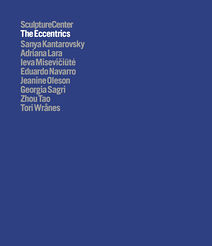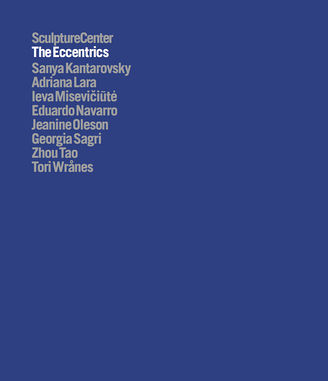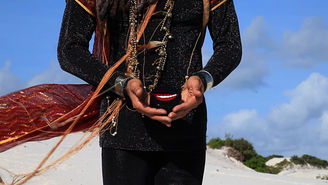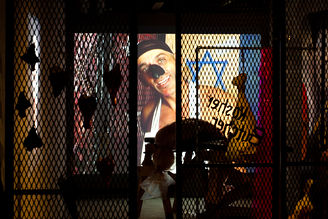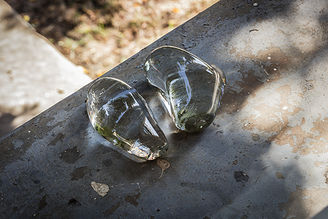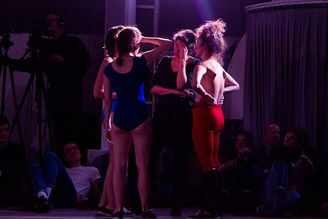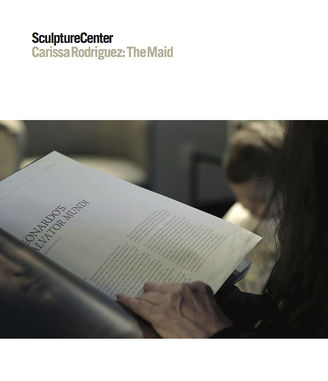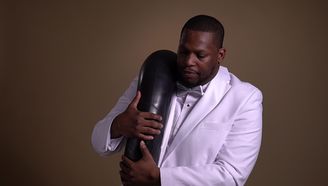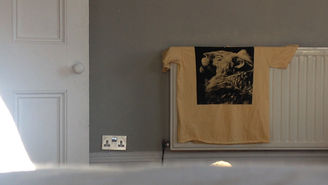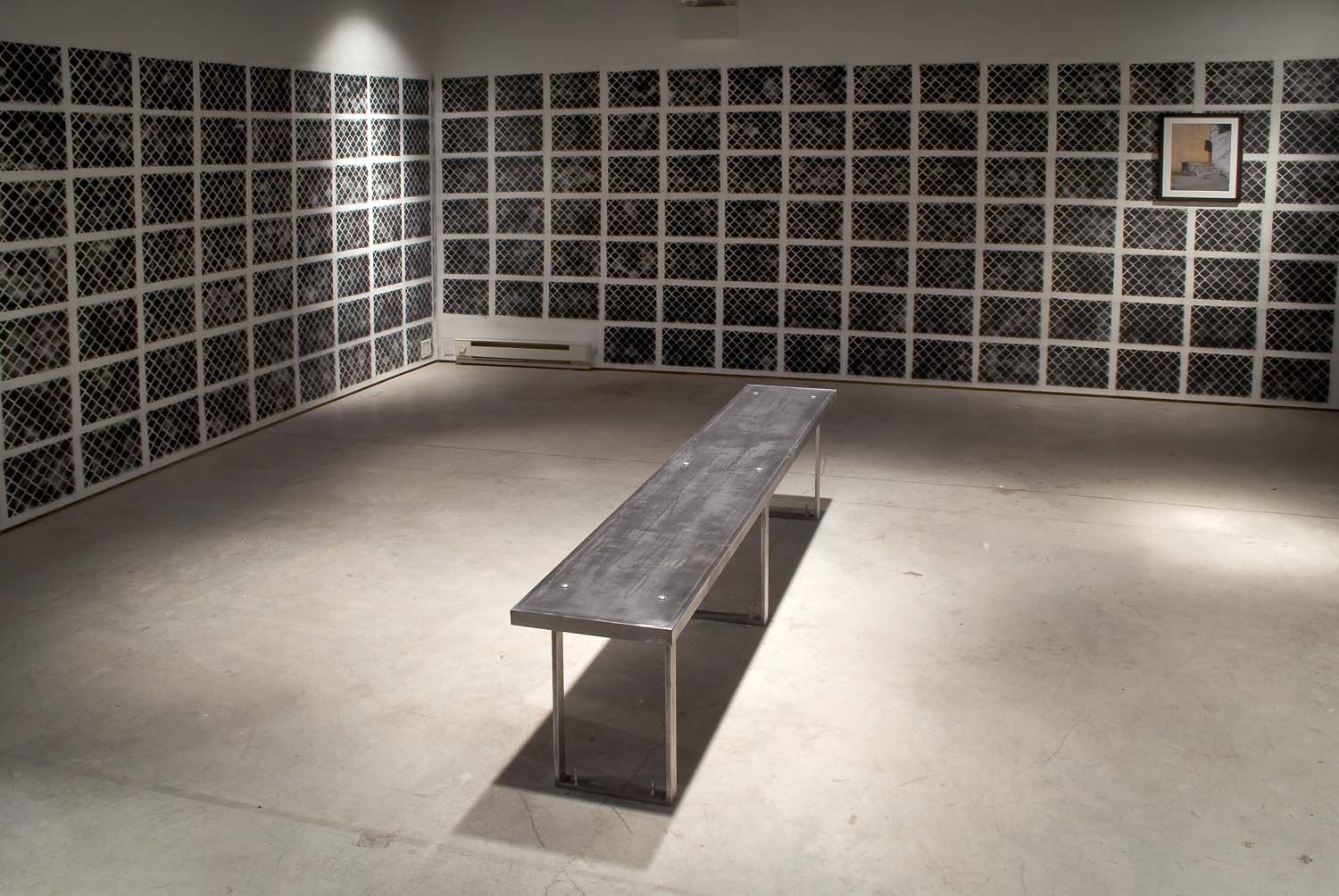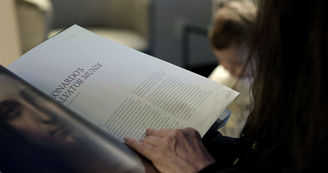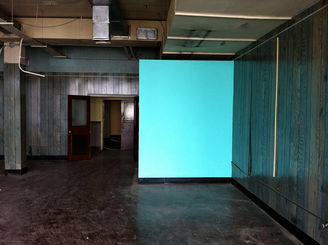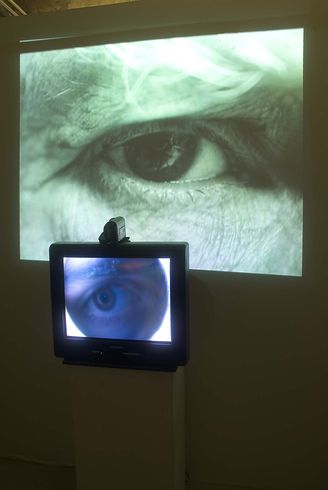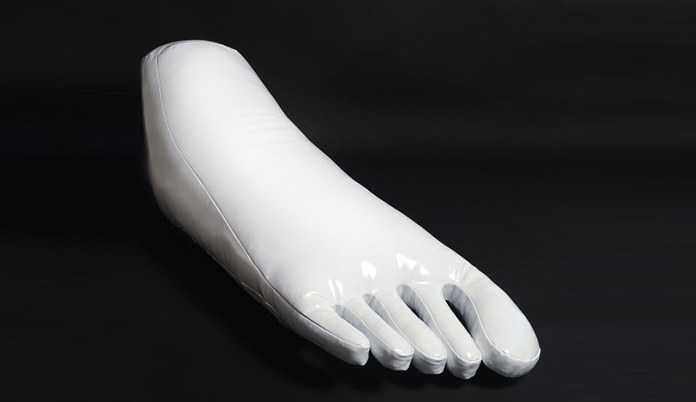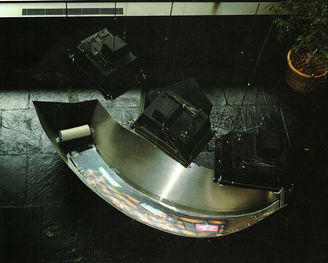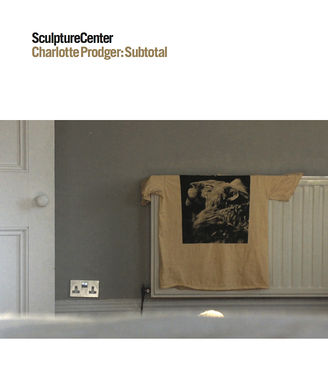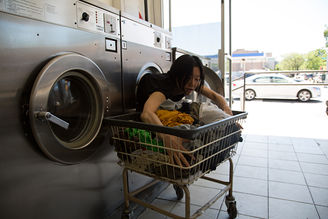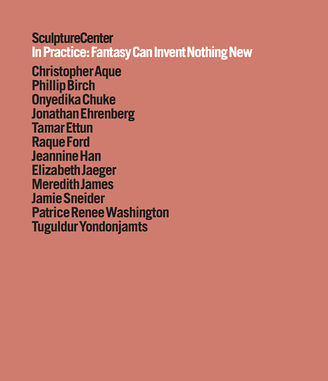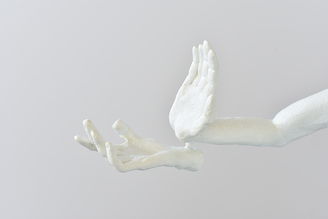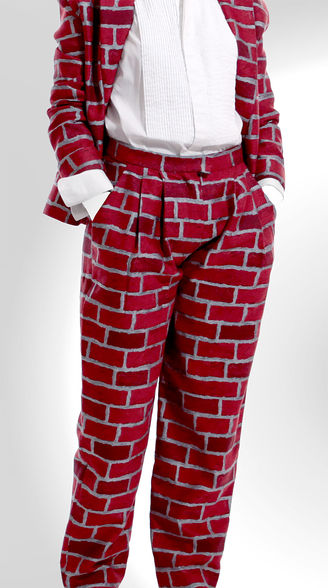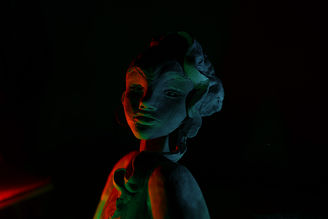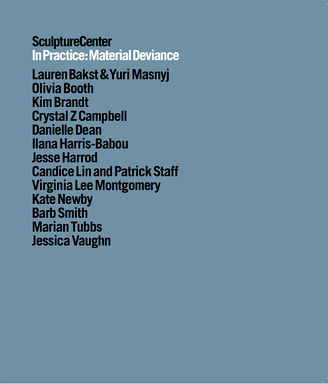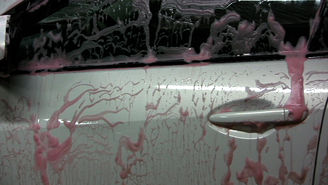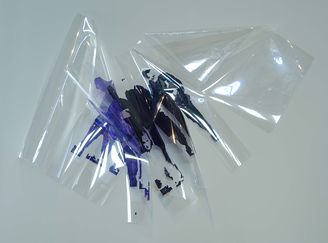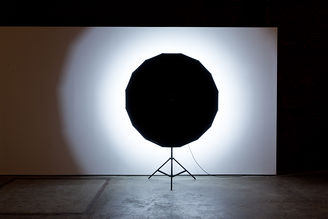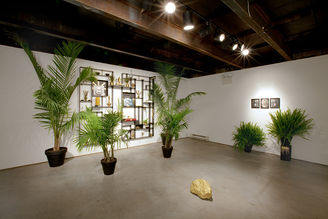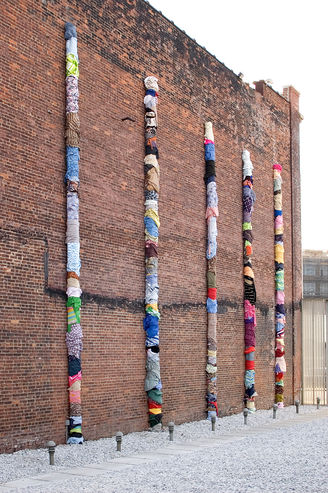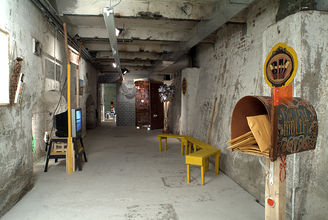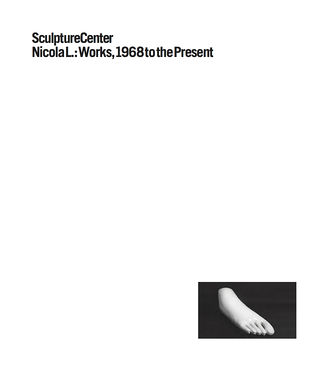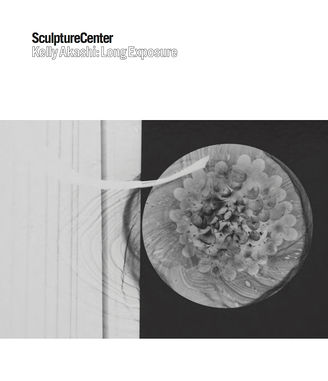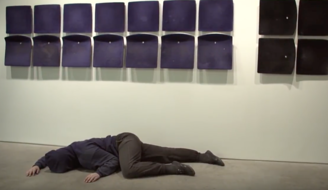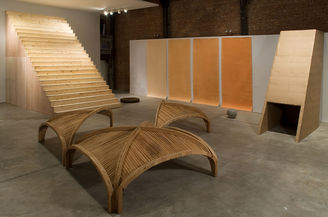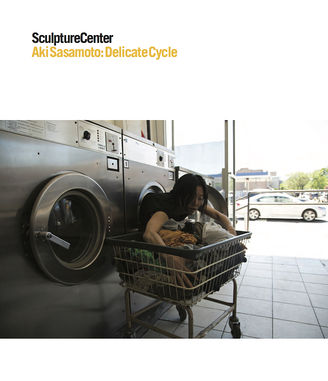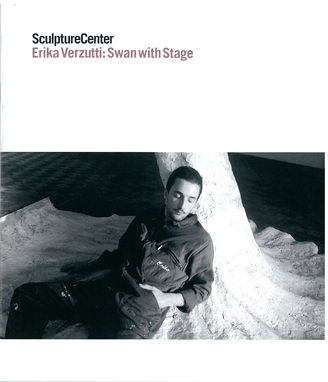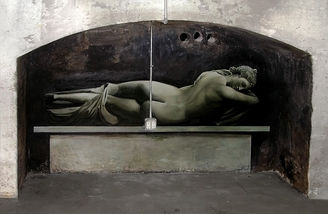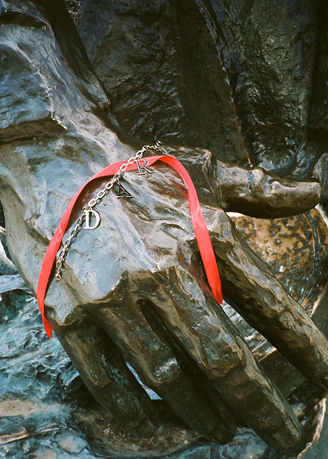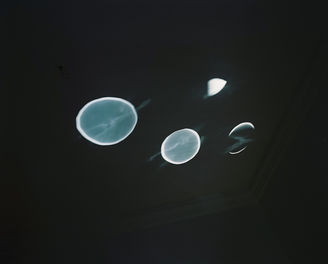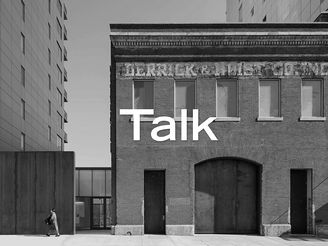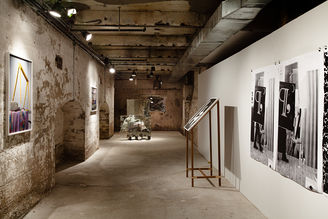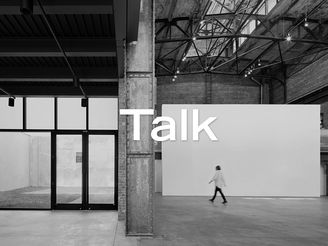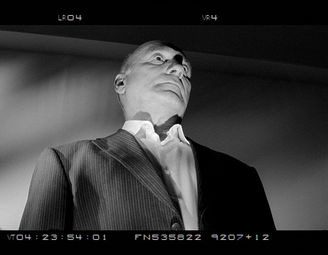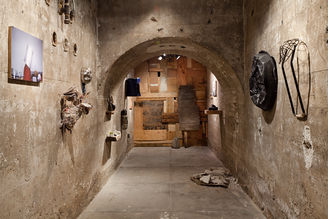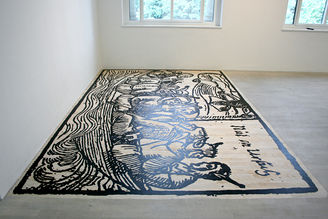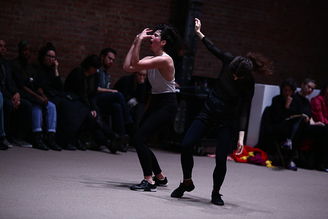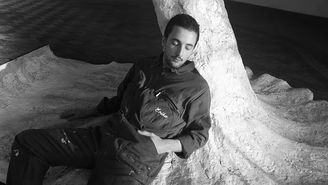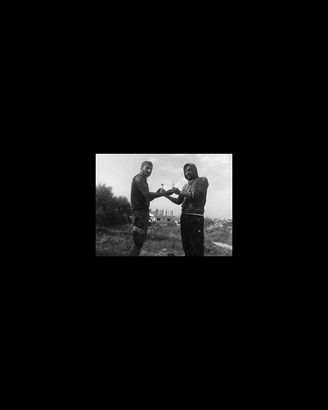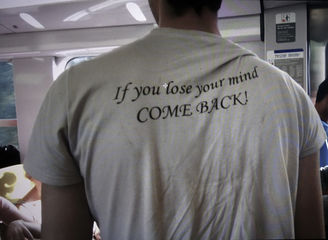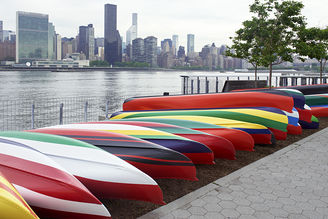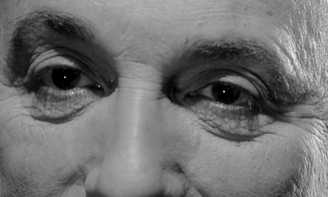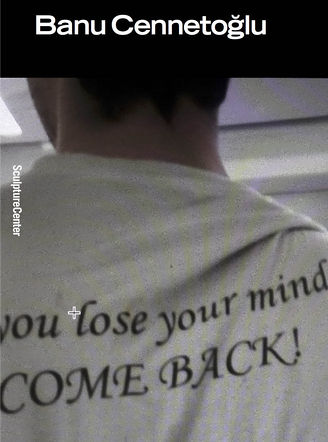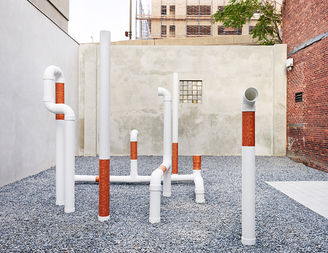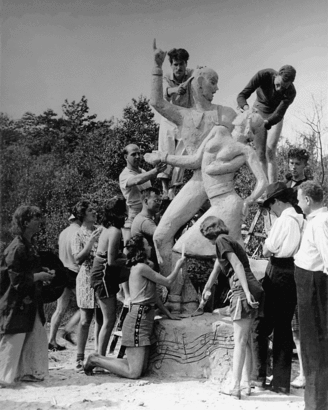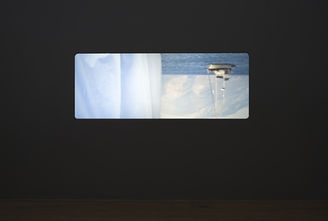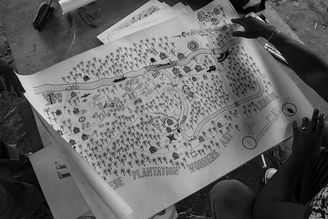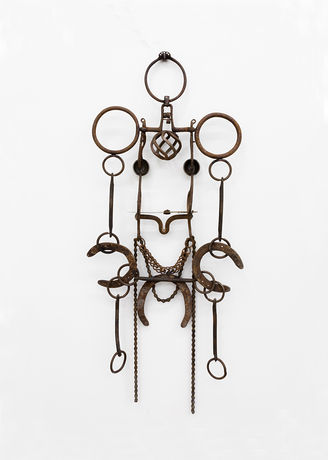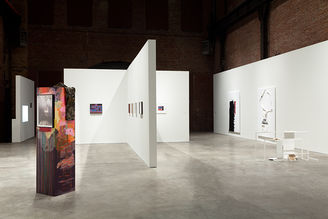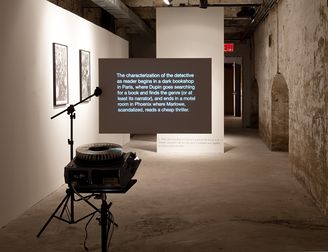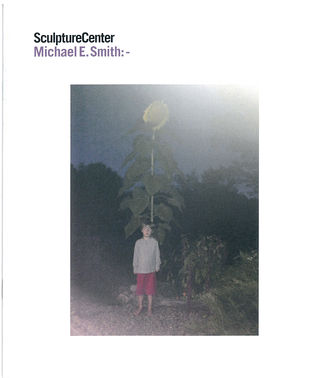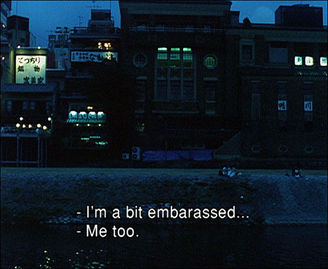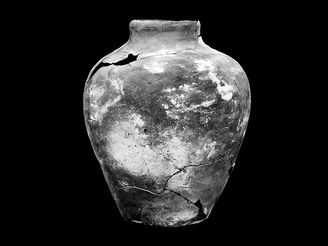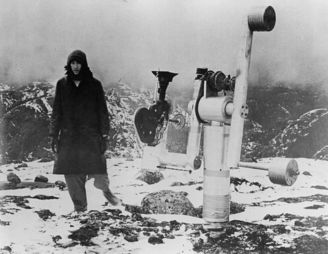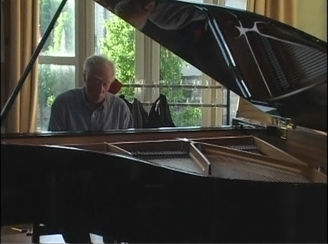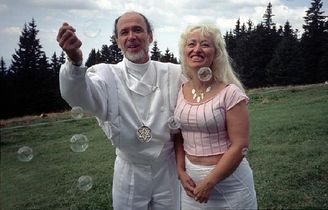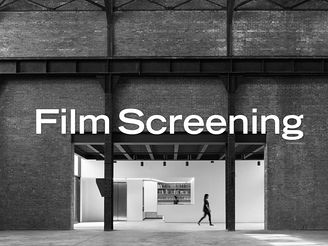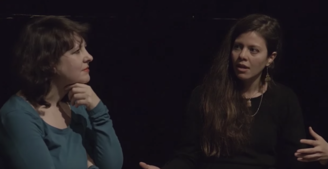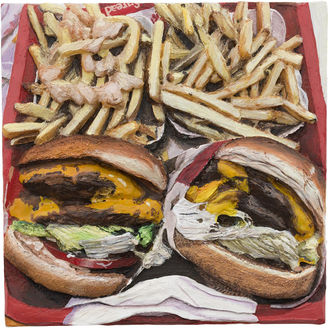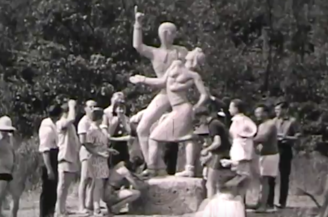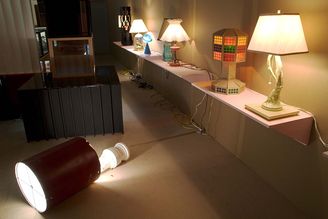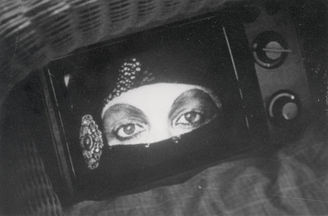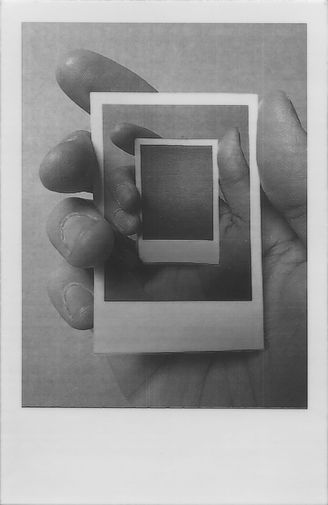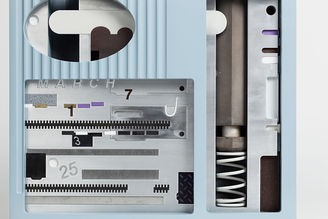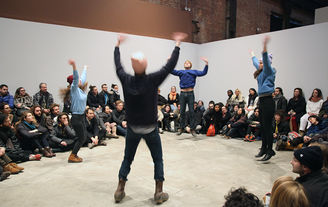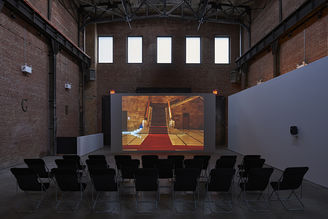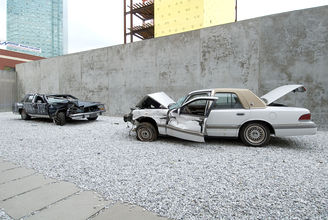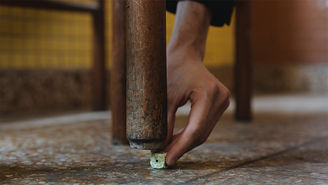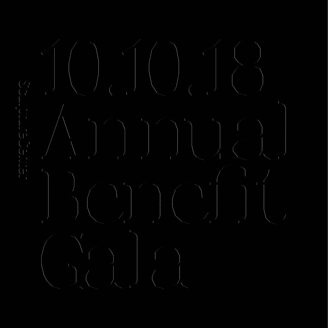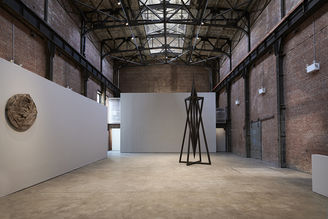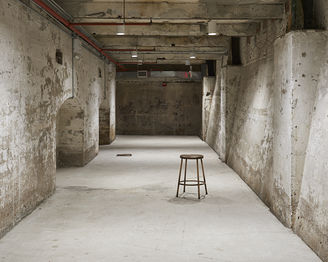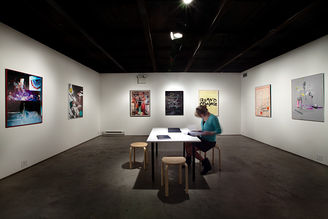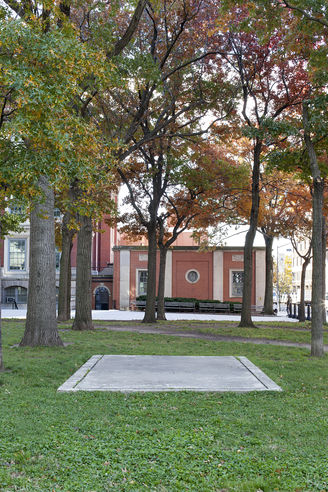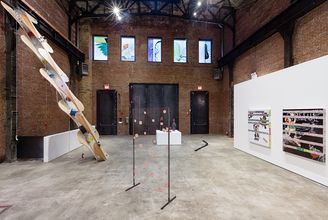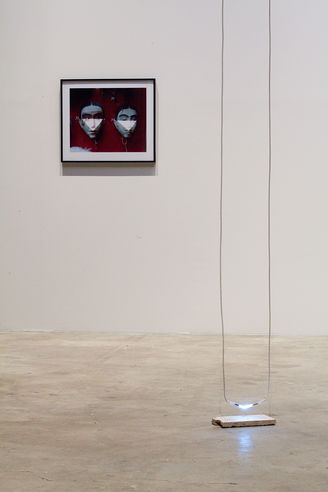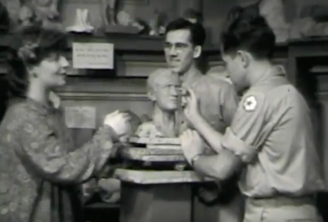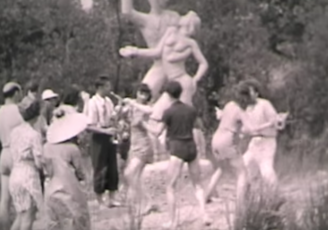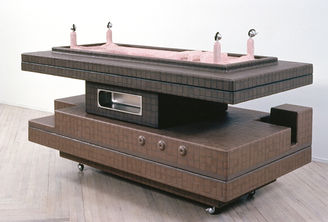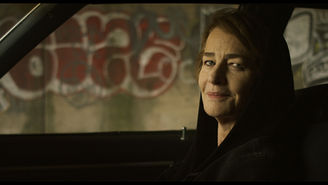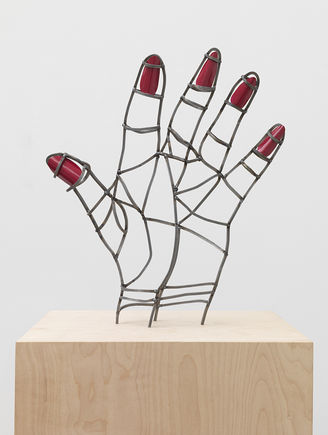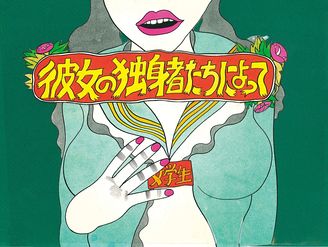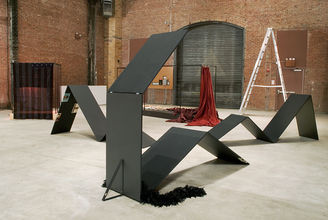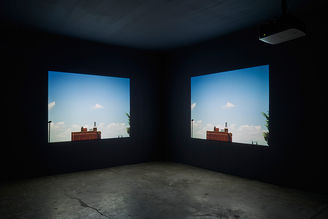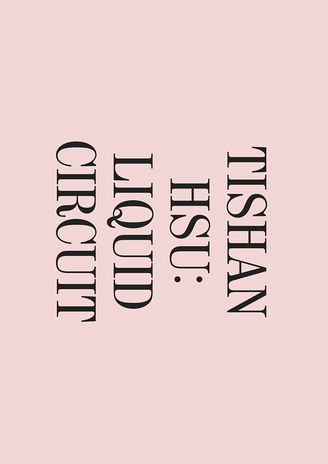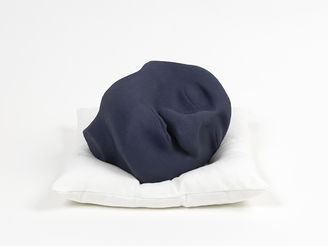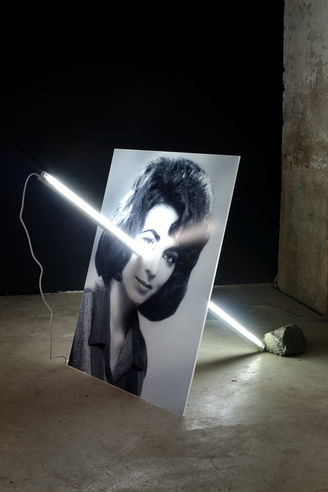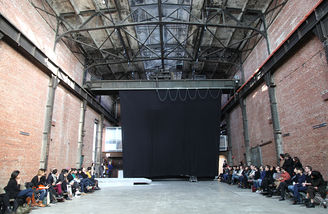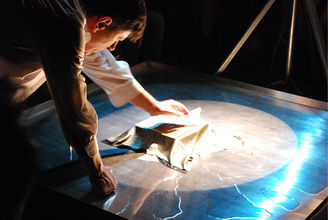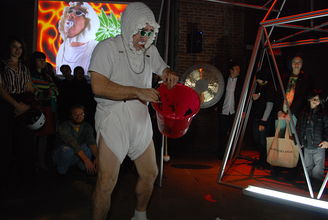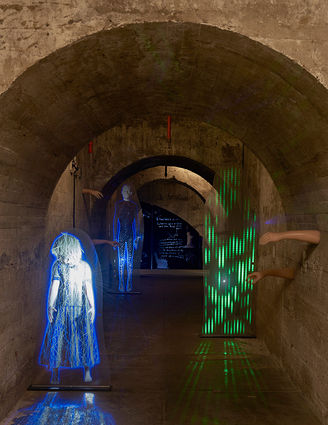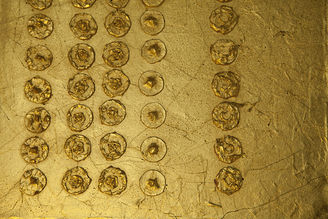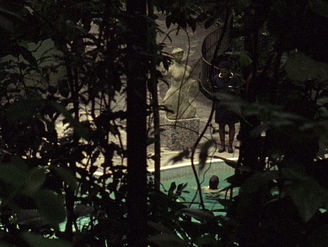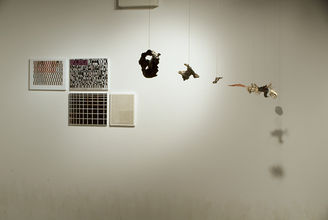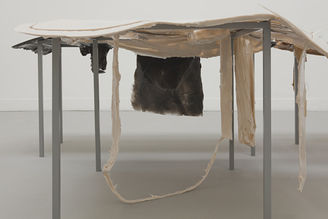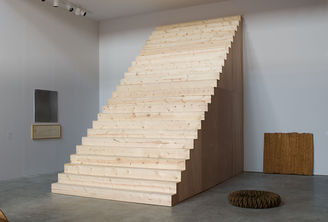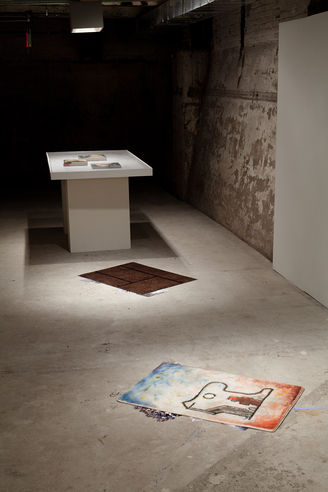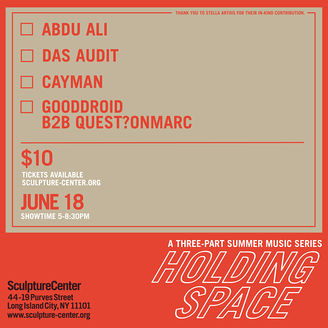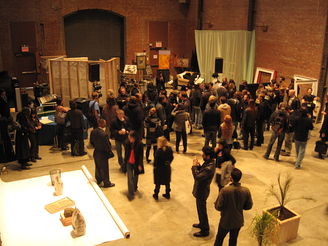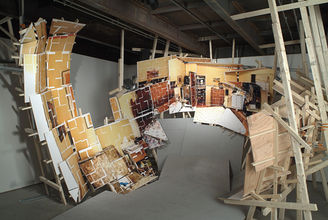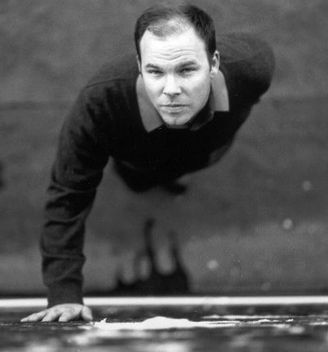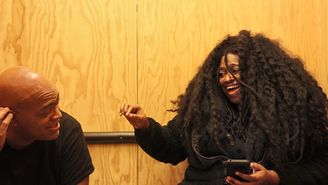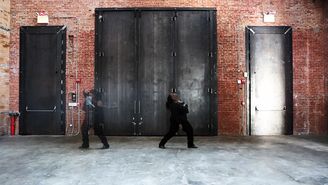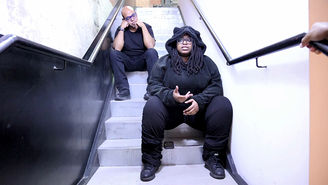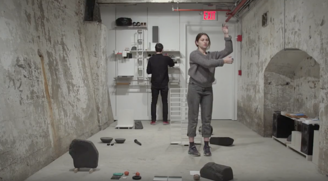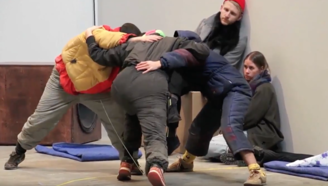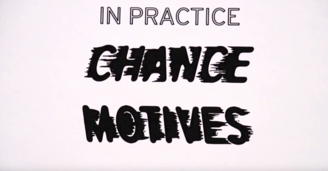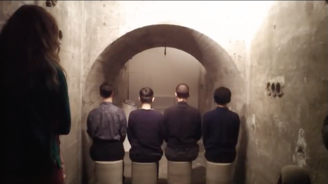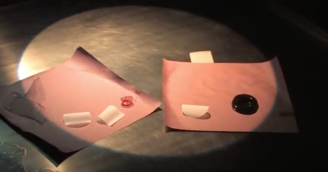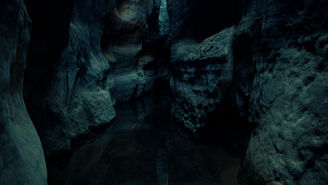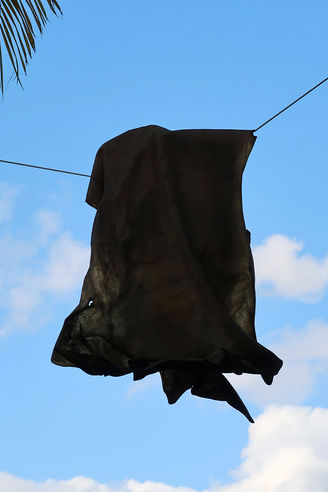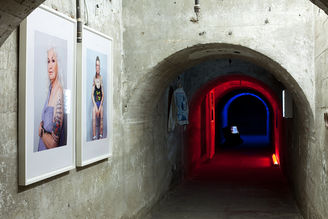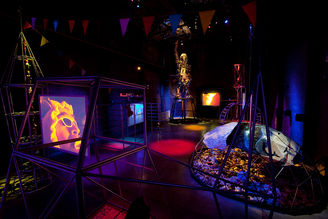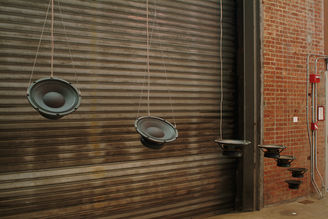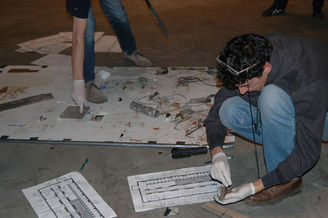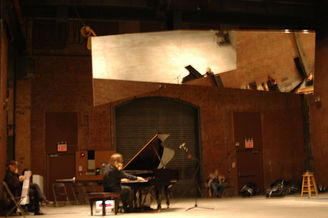The Eccentrics
The EccentricsJan 24–Apr 4, 2016
- Images
- Text
- Events
- Materials
- Press
- Sponsors
- Related
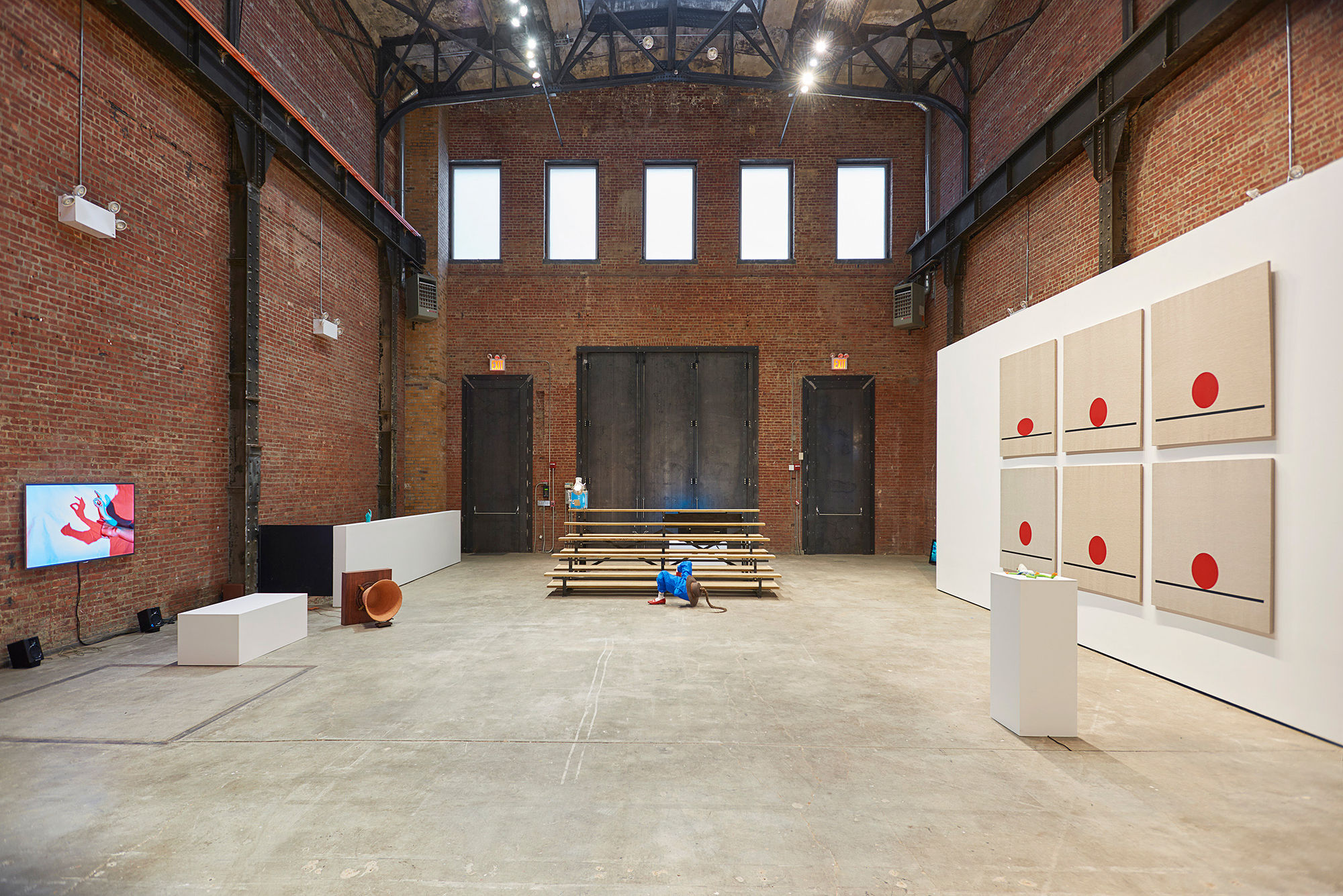
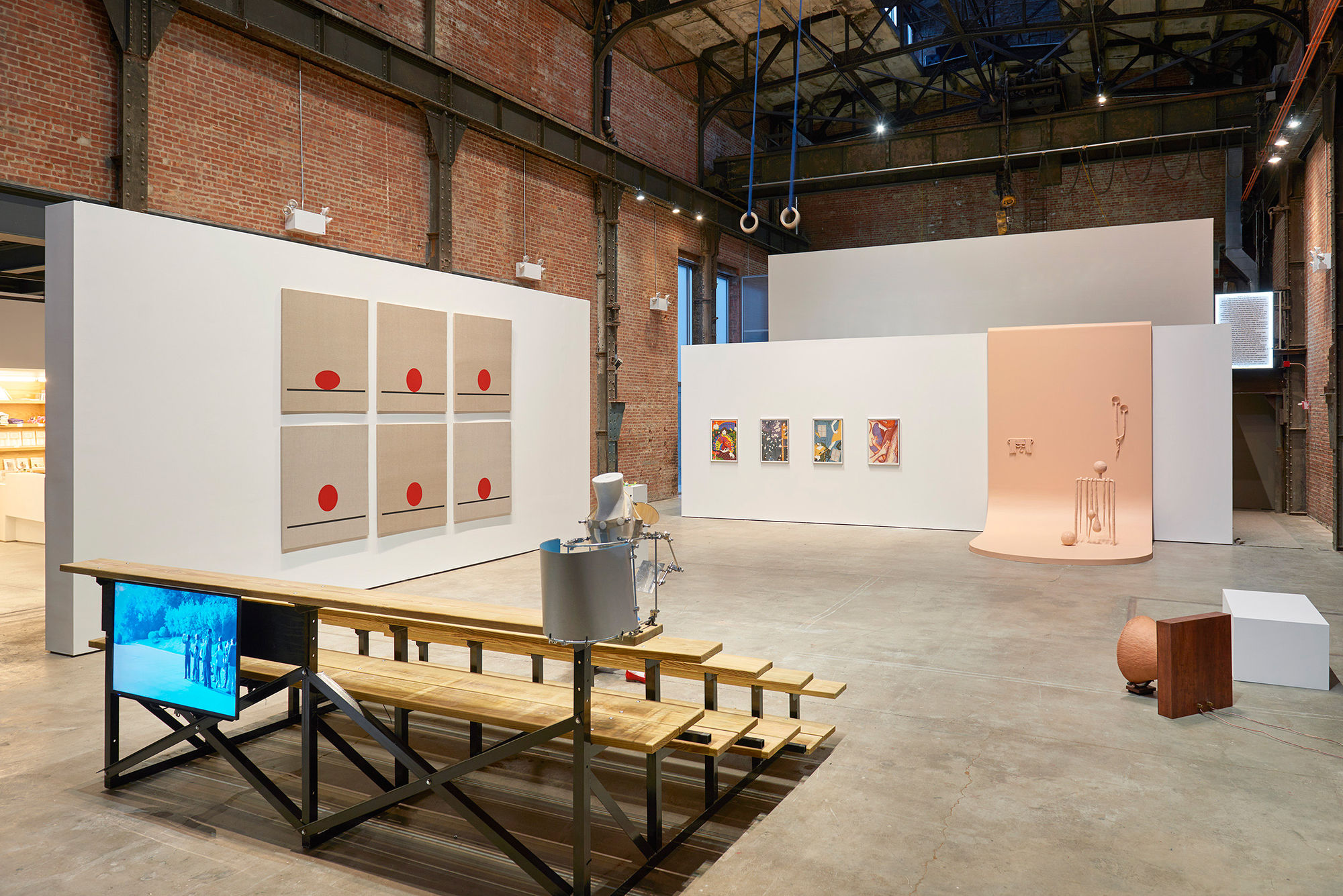
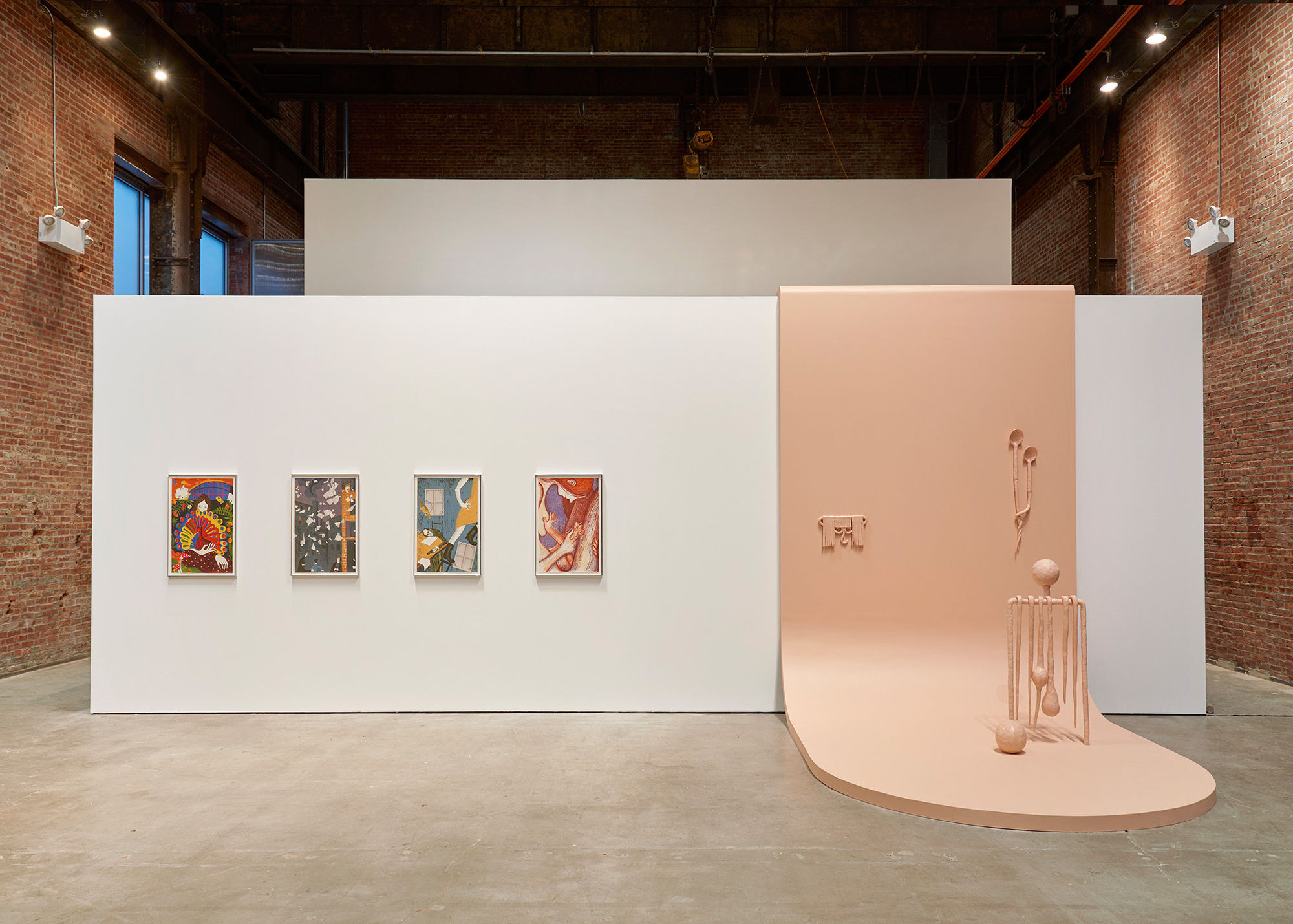
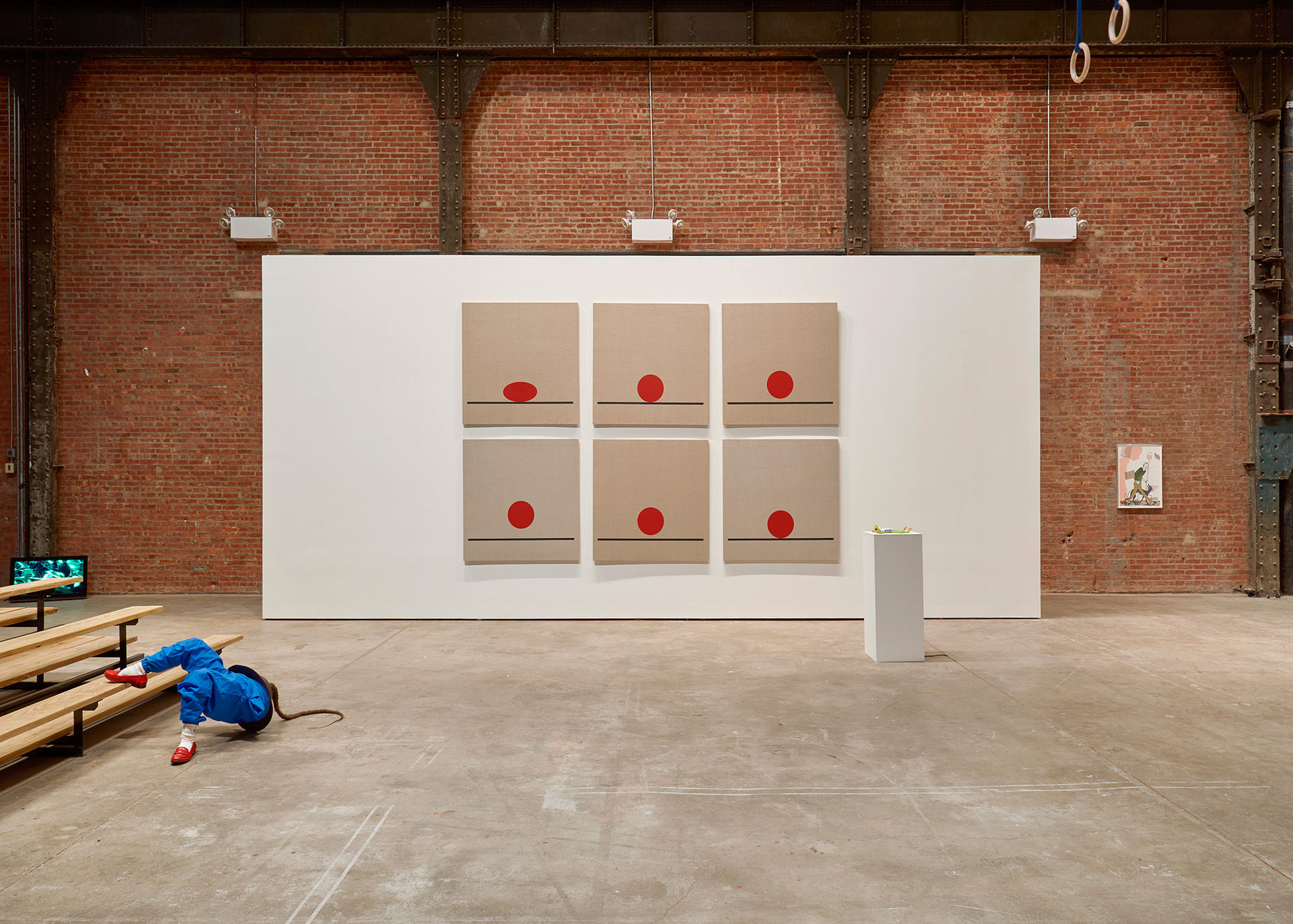
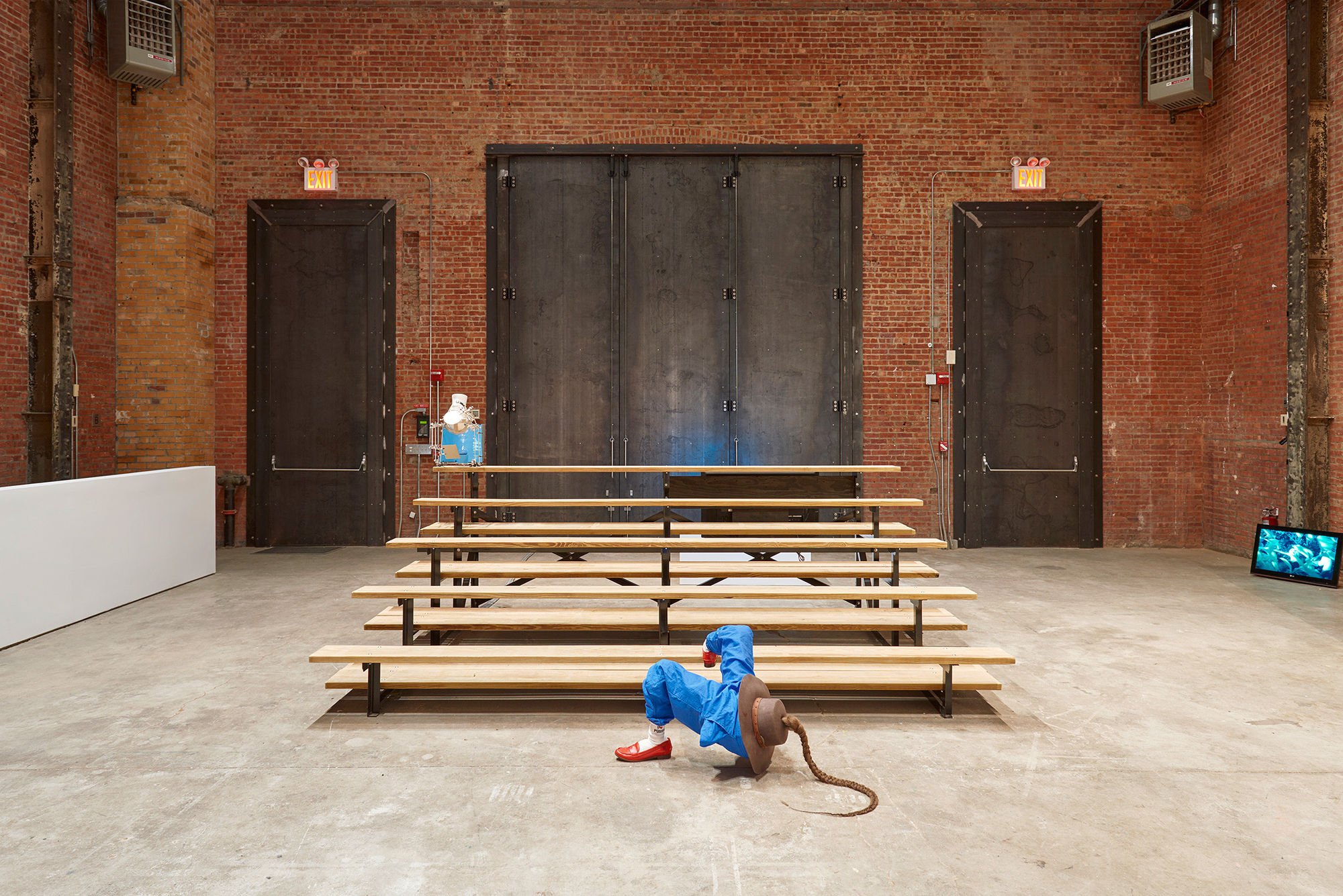
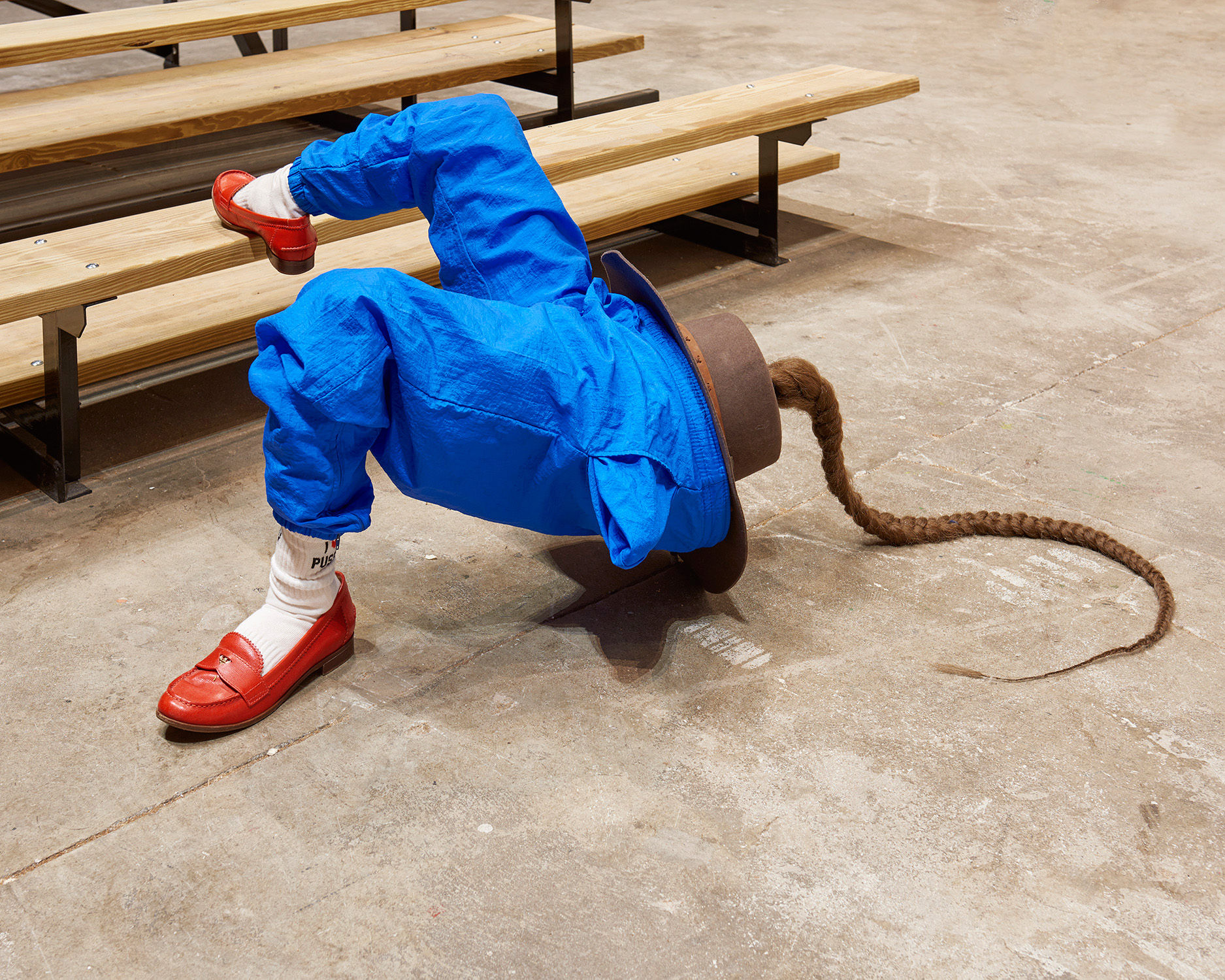
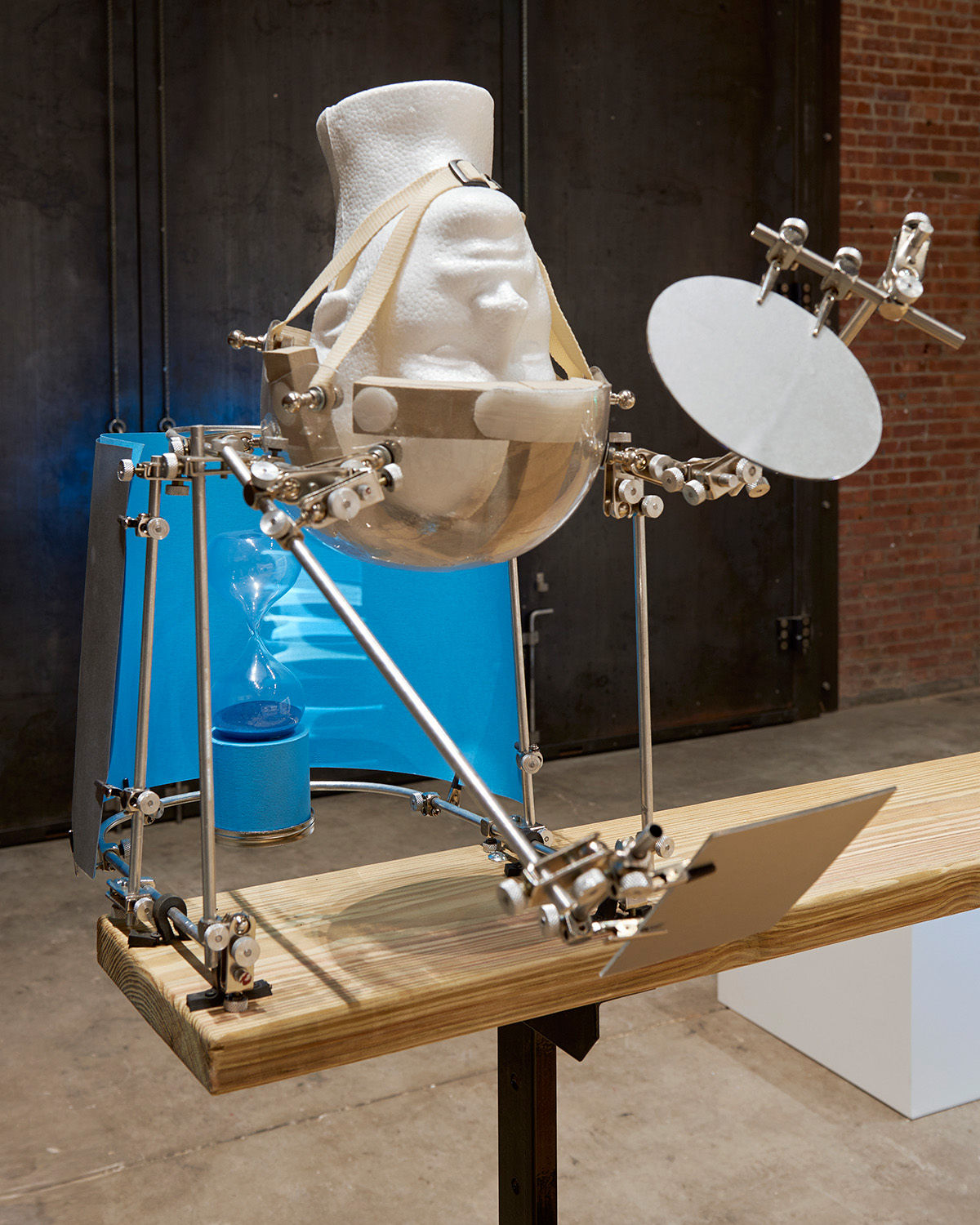
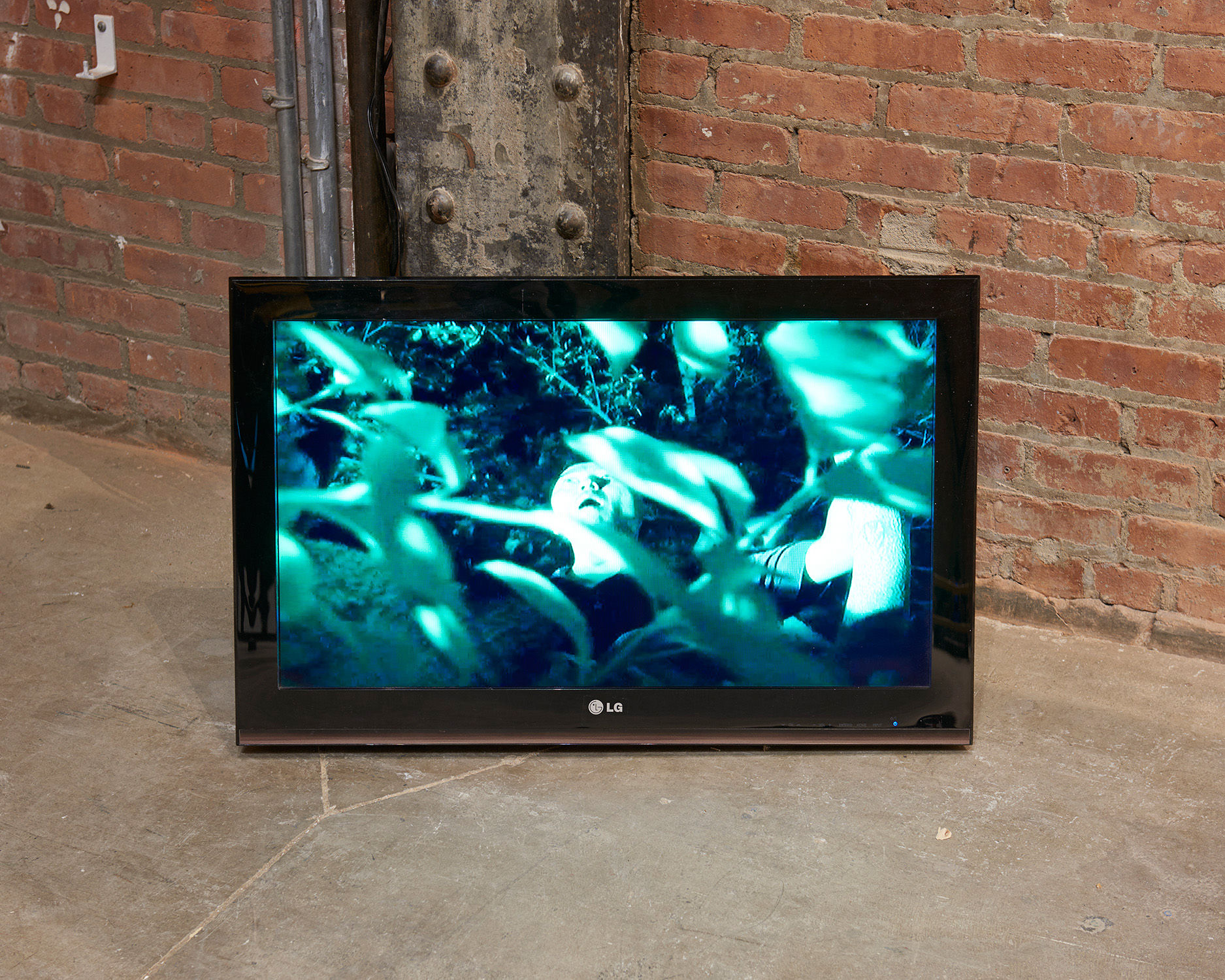
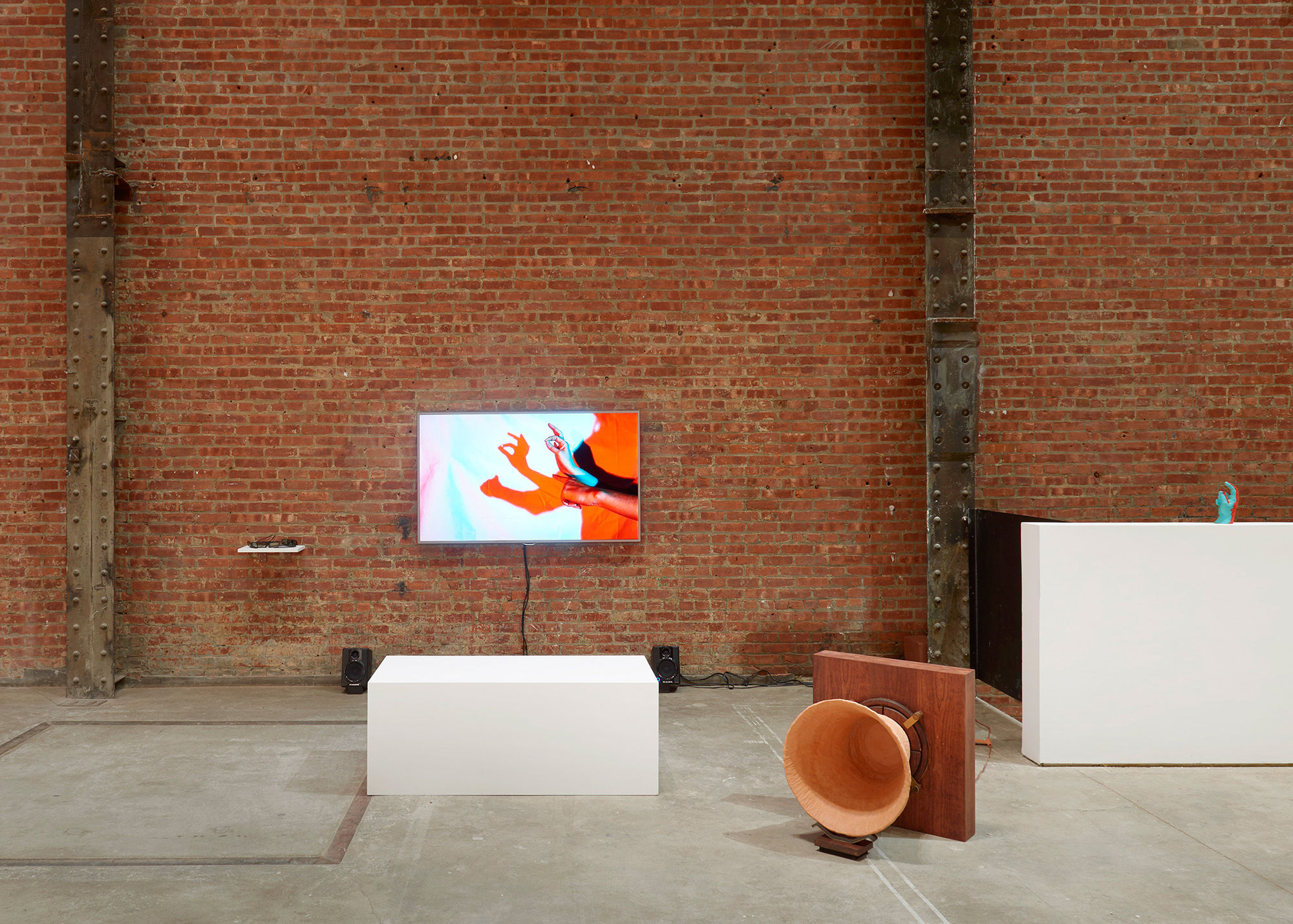
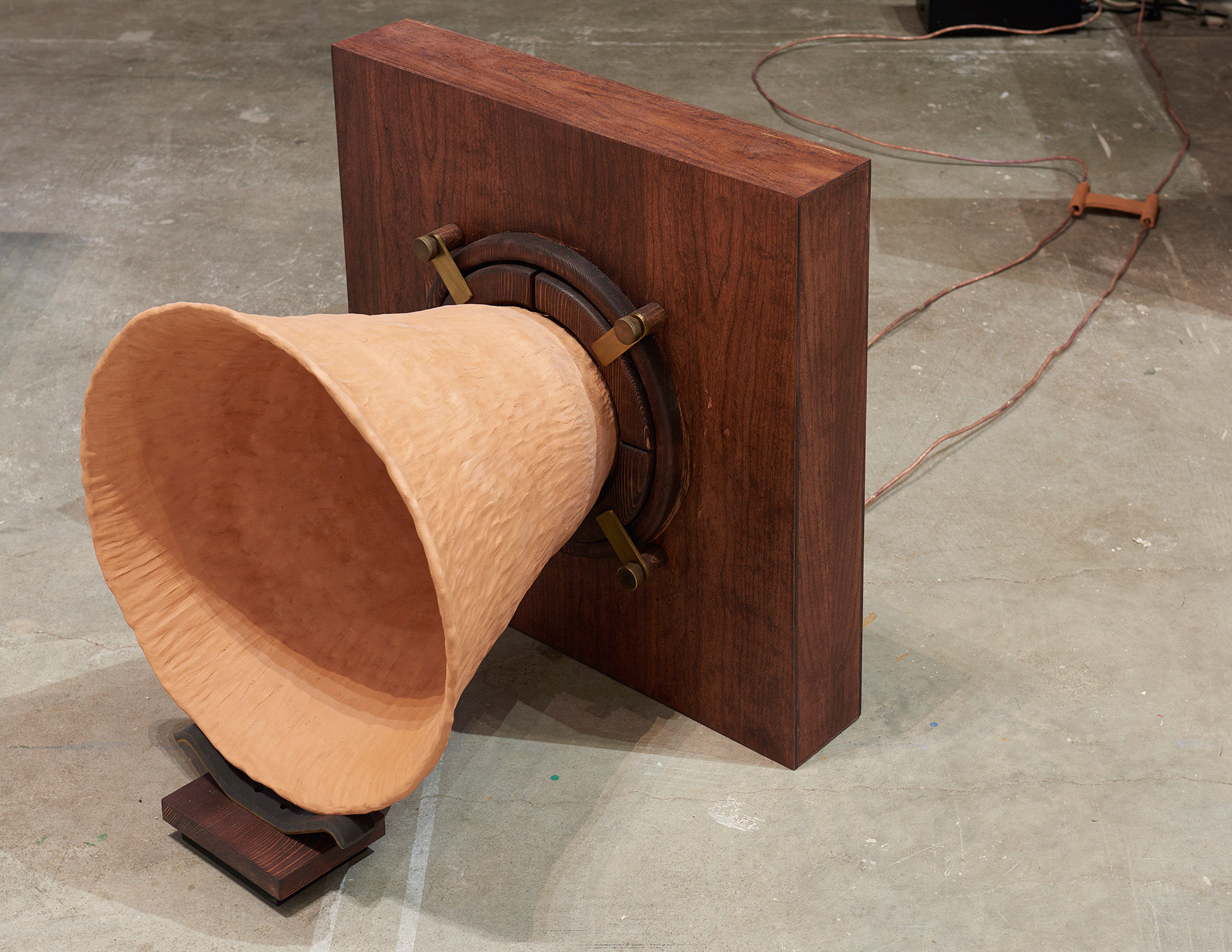
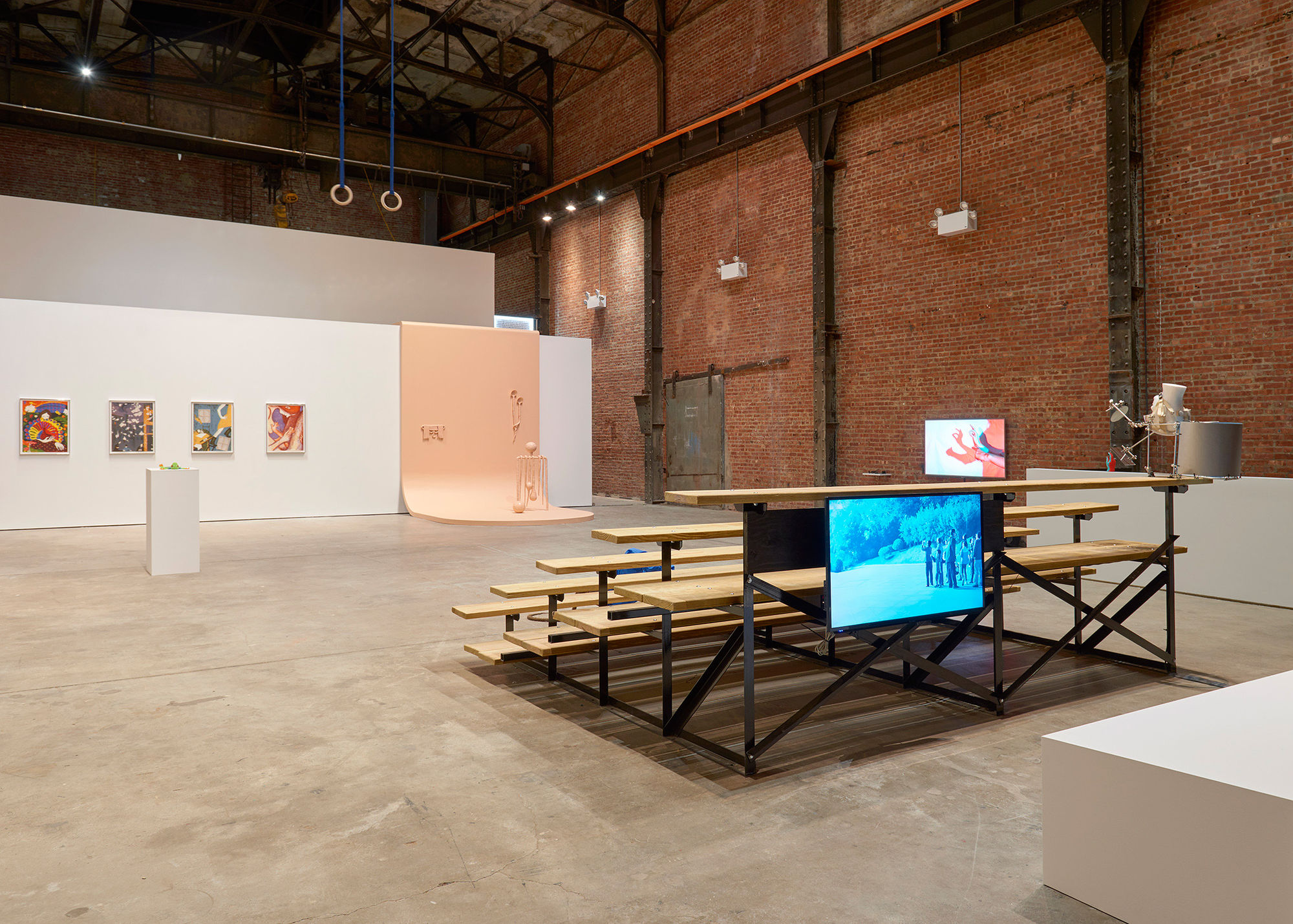
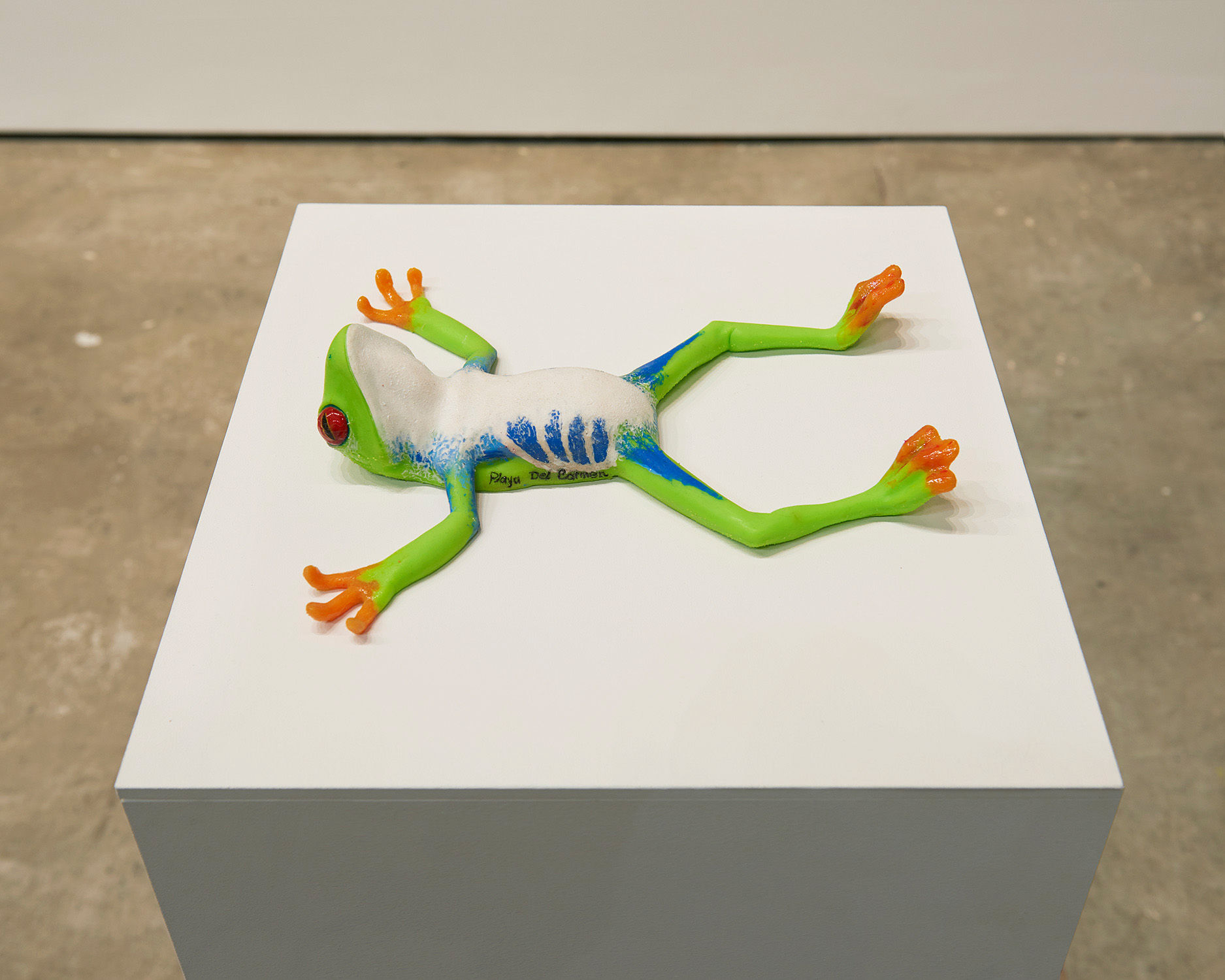
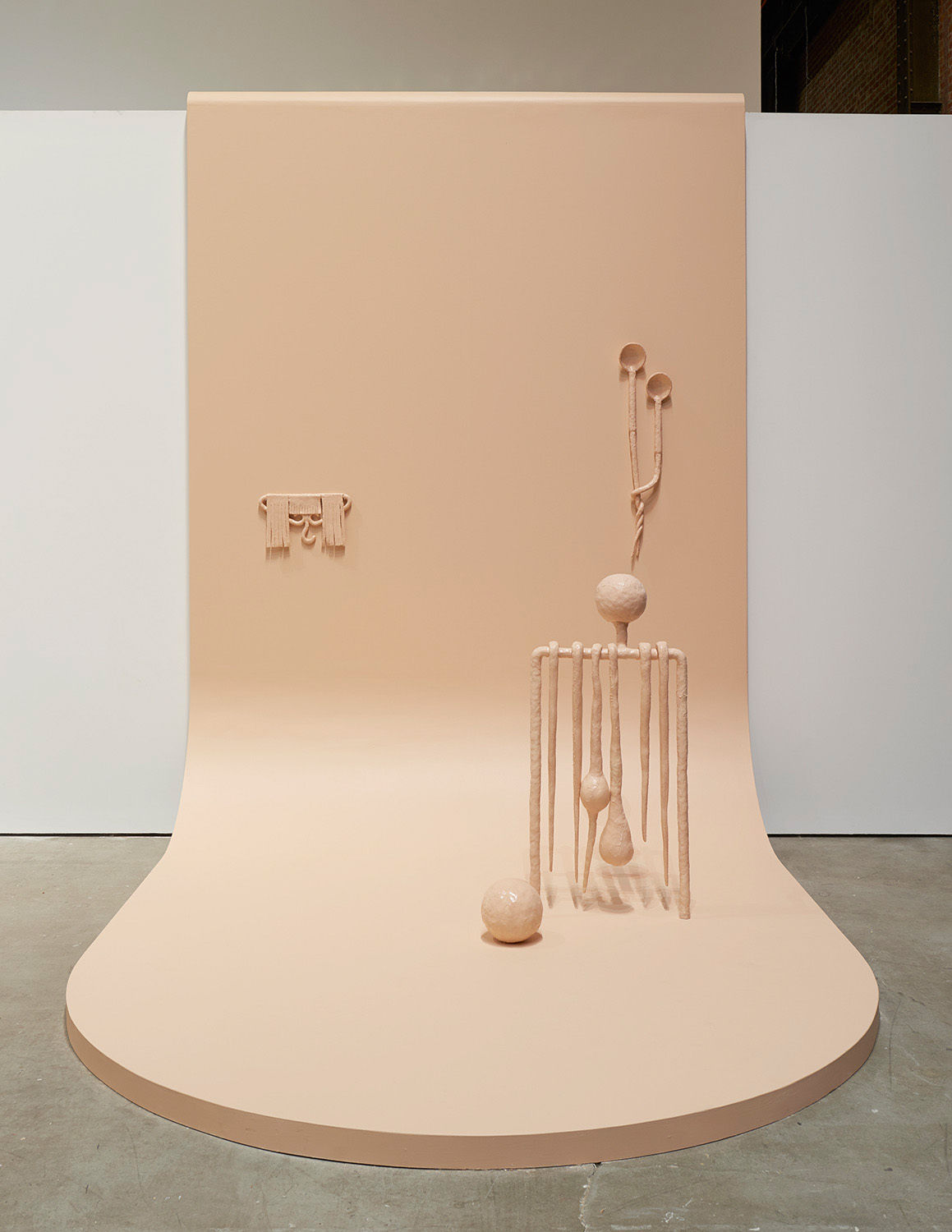
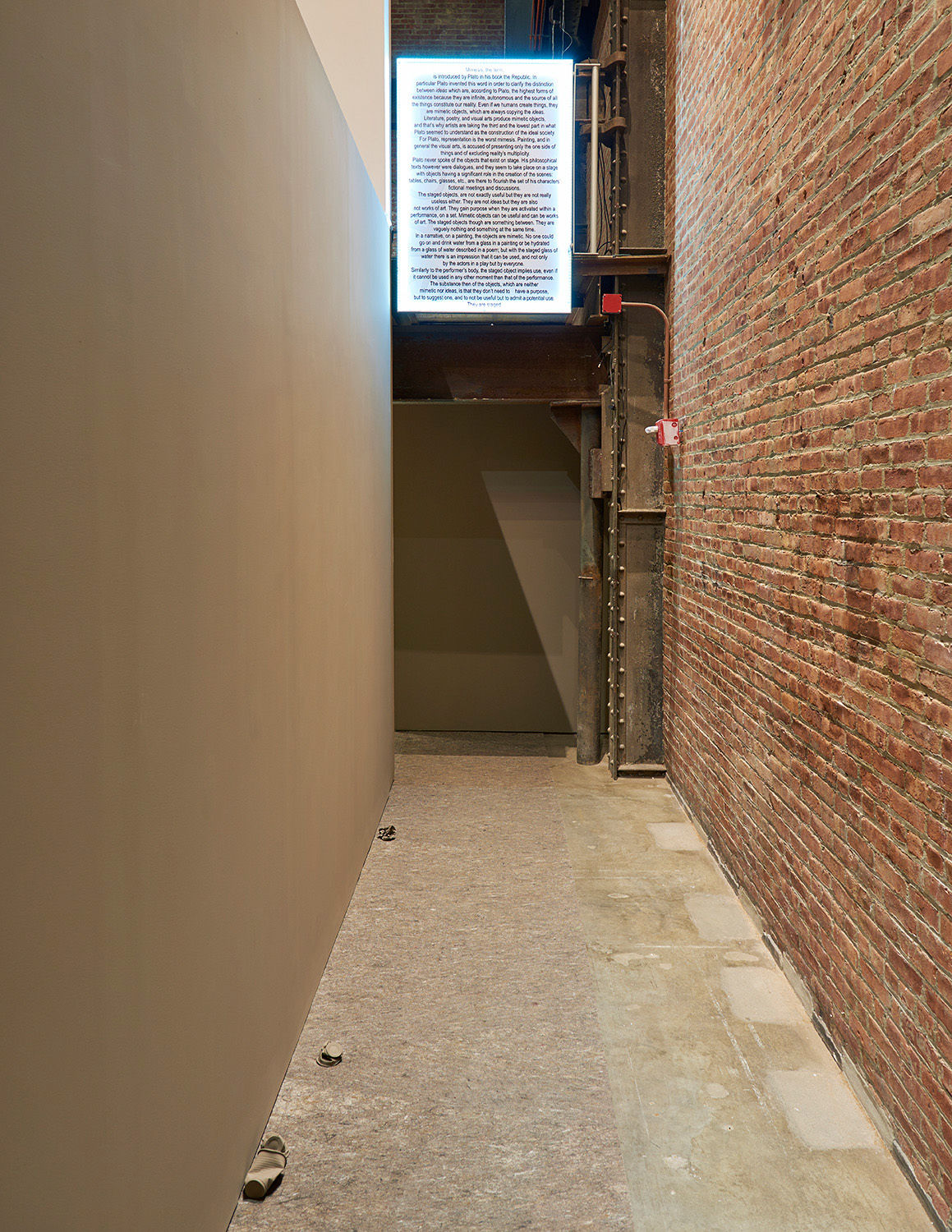
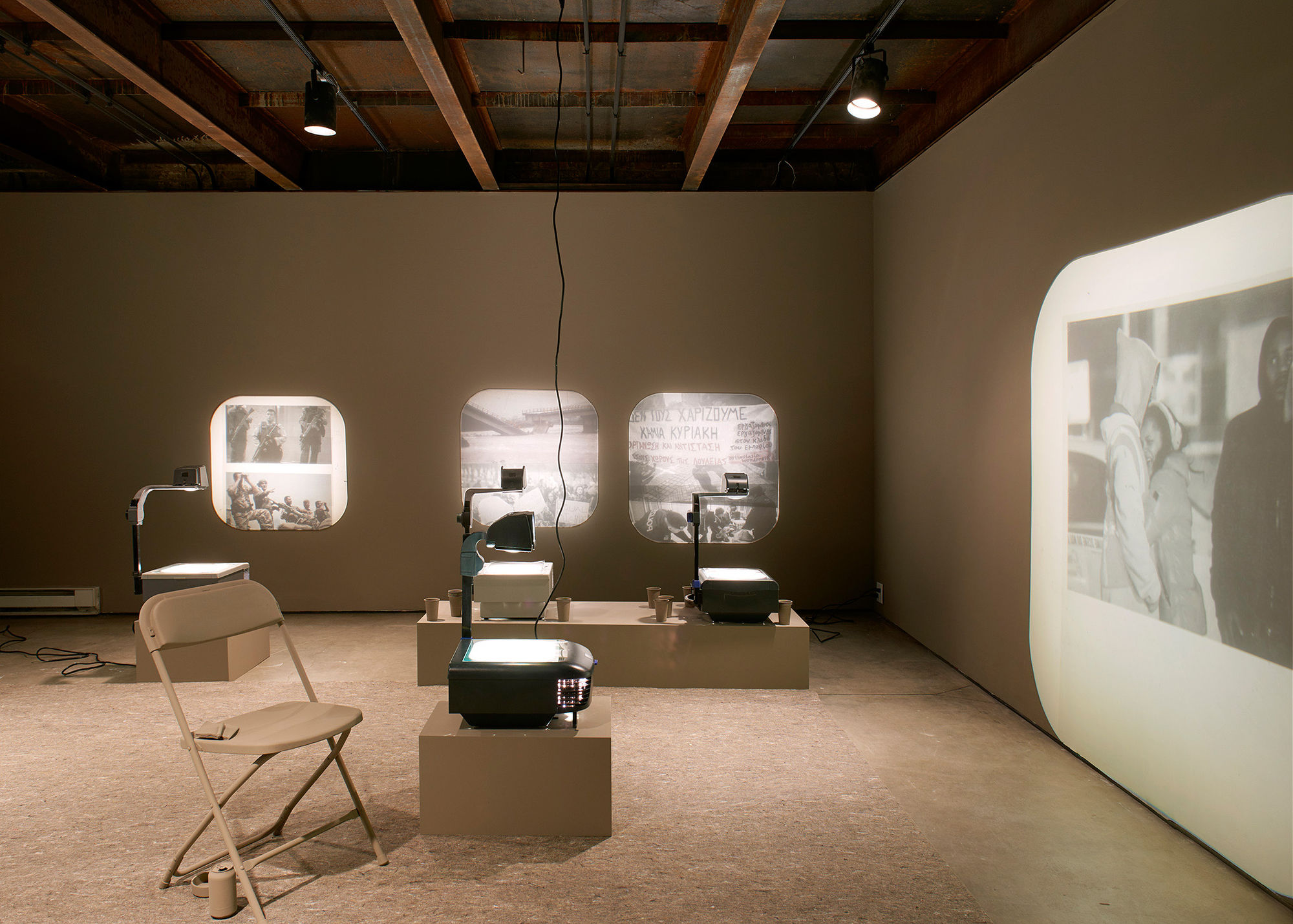
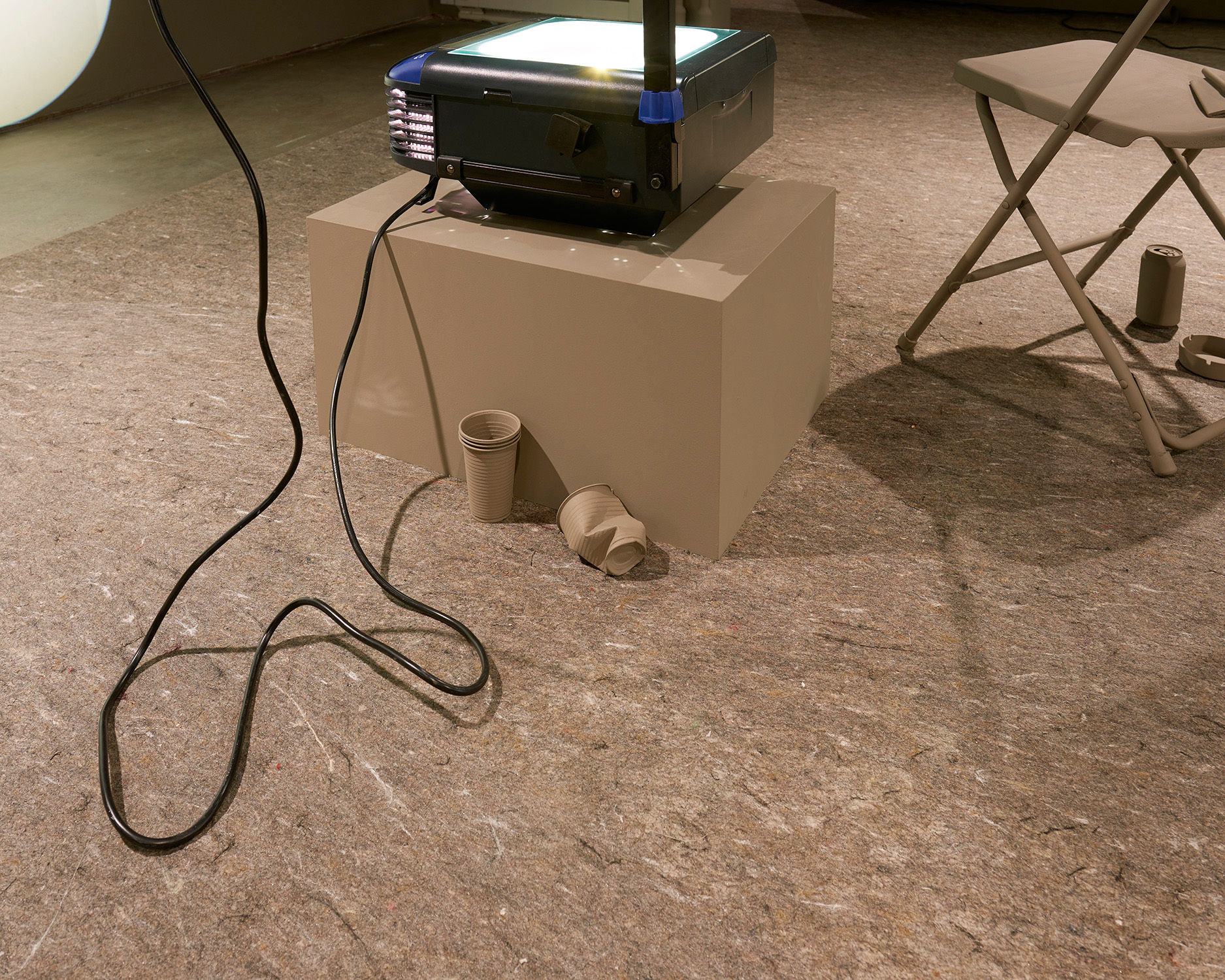
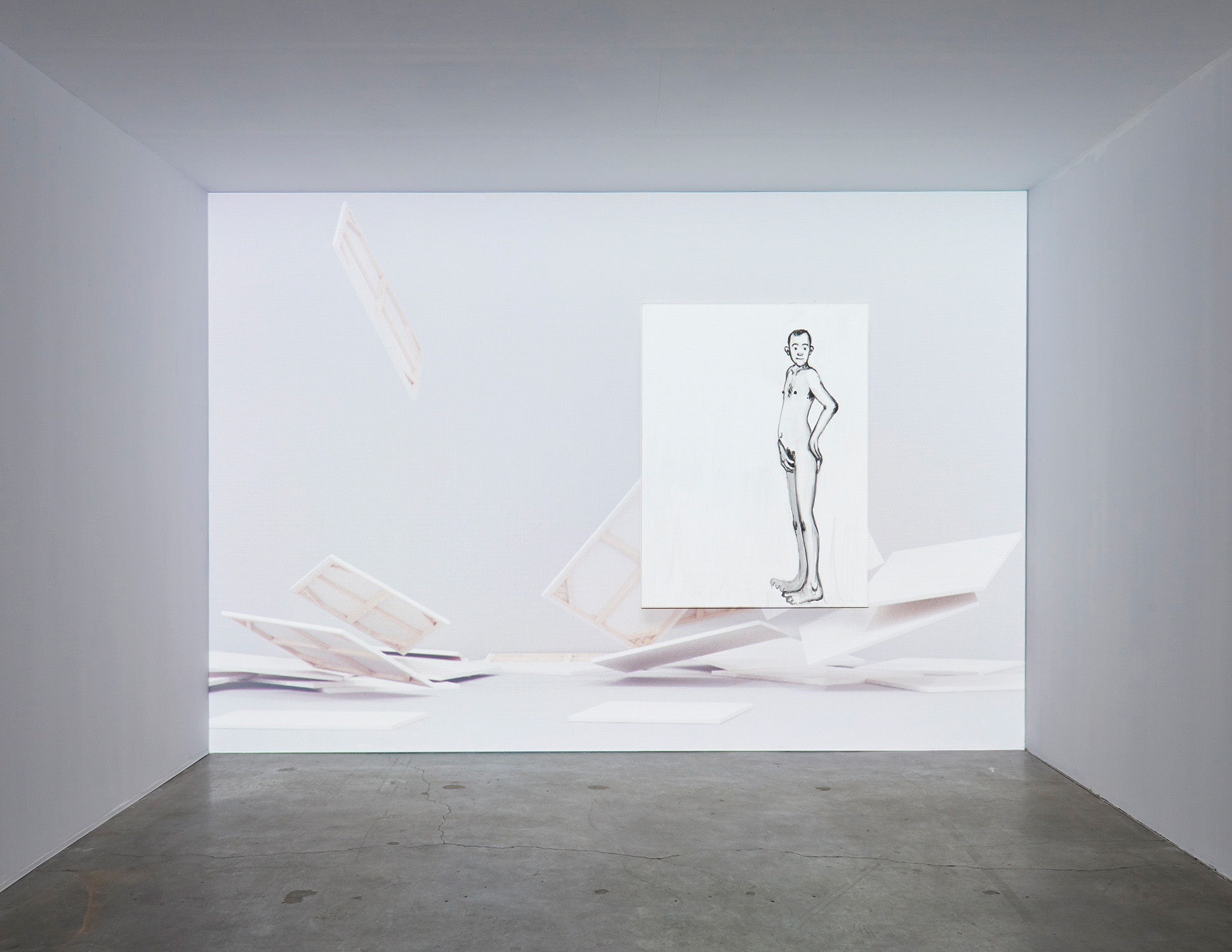
Installation view, The Eccentrics, SculptureCenter, 2016. Photo: Kyle Knodell
Evoking the figure of the "eccentric," a term for Russian circus performers, Walter Benjamin alludes to clowns, magicians, and acrobats as the forerunners to the comic actors who later inhabited the newly created space of film in his influential 1936 text, The Work of Art in the Age of Mechanical Reproduction. The arena of the circus—where ancient rituals are passed through the ages into the present day—conjures laughter and wonder, disbelief, and fear. This is a space where assumed natural orders can be reversed and undone as demonstrated through displays of mastery over wild animals and fire, in moments where the rules of physics are seemingly defied, and in acts where the body and identity are truly malleable. While the artists in this exhibition work from 21st century perspectives, they similarly explore the significance of special effects created through analog methods.
Magic, science, belief, and politics are intertwined in this particular mode of popular entertainment, which operates as an abstract framework for the exhibition. To fully experience the effects of this alternate reality, one must witness the physical objects and actions unfolding in real space over time. While new media forms have radically altered the physical and material make-up of an event like the circus today, the artists in this exhibition speak to the politics of this particular mode of folk entertainment. The archetypes of the clown, magician, and acrobat persist, albeit as changed cultural characters. The range of performances found in an event like the circus allows for critique and pleasure, role reversals, and societal upheavals within the parameters of controlled celebrations. Its narrative arc, comprised of disparate acts, calls into question the rigidity of the rules and order—evoking physical, emotional, social, and political realms—in the worlds outside of its tents.
The sense of the theatre is the sense of the rope, the sense of accident. A healthy, joyful elasticated tension of our entire being, of our total life energy. When your breath fails, when it chokes in your gullet, when little red devils dance in your brain. Like at the circus. Right under the big top—as if hung by a thread—hangs the trapeze artist and the entire audience is frozen, with bated breath...and...and...a bit more! Gasp! Enough! – Enough! – Enough!
—From the Factory of the Eccentric Actor manifesto, 1922 *
Featuring: Sanya Kantarovsky, Adriana Lara, Ieva Misevičiūtė, Eduardo Navarro, Jeanine Oleson, Georgia Sagri, Zhou Tao, and Tori Wrånes.
The exhibition was curated by SculptureCenter Curator Ruba Katrib and is accompanied by a fully illustrated publication with texts by Katrib and curator and writer Mark Beasley. The exhibition catalog can viewed online or purchased in our Store.
The participating artists embed images and objects with performativity, each work comprising a single act within the show. The works in The Eccentrics included several new commissions, some existing works, as well as adaptations of past works and a series of newly commissioned performances. Ieva Misevičiūtė (born 1982, Lithuania) made a tongue, a recurring element in her performances, and turned it into a site-specific sculpture that also serves as a stage on view for the duration of the exhibition. Misevičiūtė also created a new performance that originated on, but ultimately ventured off of the tongue. Georgia Sagri (born 1979, Greece) became a sort of news tamer in Sunday Stroll Undone and Redone (2015), calling for empathy as she reorders and reanimates news items and images through a series of sculptures on view and a new performance. Zhou Tao's (born 1976, China) videos combine the clashes between corporate aesthetics, public space, industry, and political agency as seen in protests and social spaces, which often result in unintended spectacles. Jeanine Oleson (born 1974, USA) handled clay and copper, exploring their properties as constructive and conductive elements in a new 3D video and group of sculptures. Oleson also premiered a performance as part of this material investigation. Tori Wrånes (born 1978, Norway) created a kinetic sculpture with its own audience of disembodied viewers. She also created a new performance that referred to her sculptures on view. Sanya Kantarovsky's (born 1982, Russia) Happy Soul (2015) is a projection of a character's comic angst, both ephemeral and concrete, in a video that actually starts to touch itself. Kantarovsky also presented a new series of lithographic prints. Eduardo Navarro (born 1979, Argentina) created a helmet that inverts time. In a group of new silkscreens, Adriana Lara (born 1978, Mexico) examined the dynamism found in bouncing, as well as the movement's relationship to life in a new sculpture.
* The "eccentric" circus performers also inspired the Factory of the Eccentric Actor, a collective of avant-garde filmmakers, playwrights, performers, and artists active in 1920s Russia.
Performance Program
The Eccentrics performance program extended out of the works on view by four of the exhibiting artists. The performances were all new commissions.
Danger, Audacity, Violence, Pursuit, Revolution, Gold, Blood, Laxative pills, Charlie Chaplin, Catastrophes on land, sea and in the air. Fat cigars, Prima donnas of the operettas, Adventures of all sorts, Skating rinks, Tap shoes, Horses, Wrestling, Torch singers, Somersaults on bicycles and all those millions and millions of events which make splendid our Today!
—From the Factory of the Eccentric Actor manifesto, 1922
Tori Wrånes
Saturday, January 23, 5pm
Georgia Sagri
Tuesday, February 2, 7pm
Jeanine Oleson
Tuesday, March 1, 7pm
Ieva Misevičiūtė
Monday, April 4, 6pm
Events
Sponsors
The Eccentrics was supported in part by the Office for Contemporary Art Norway, the Royal Norwegian Consulate General, and the Consulate General of Mexico in New York / Mexican Cultural Institute.


.jpg?w=328)



